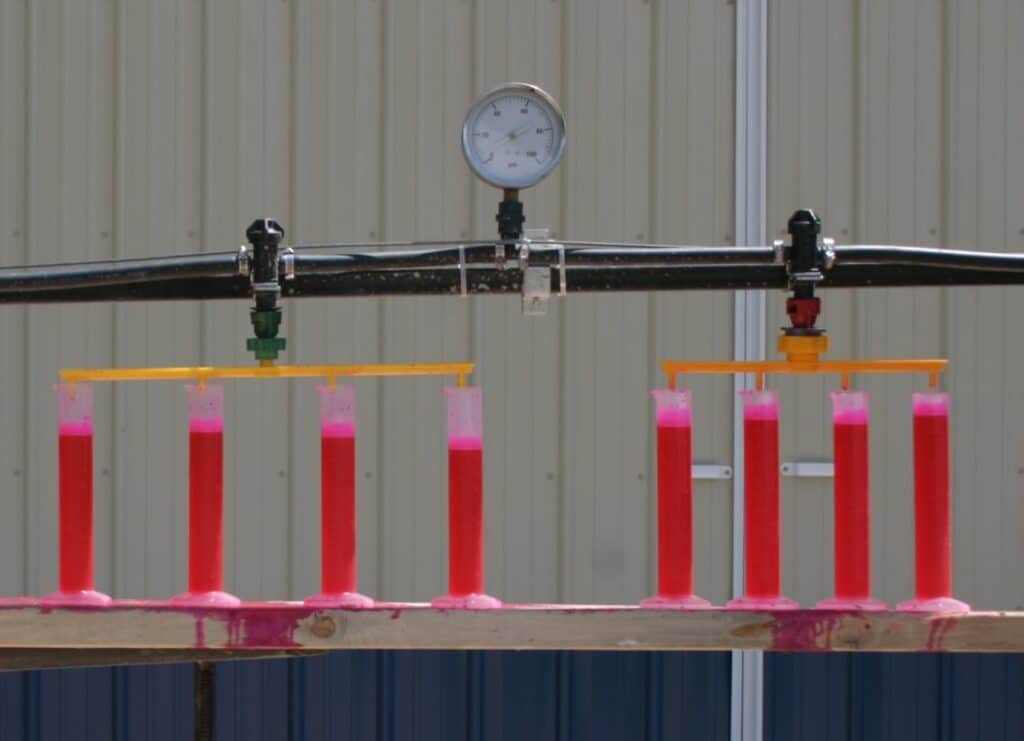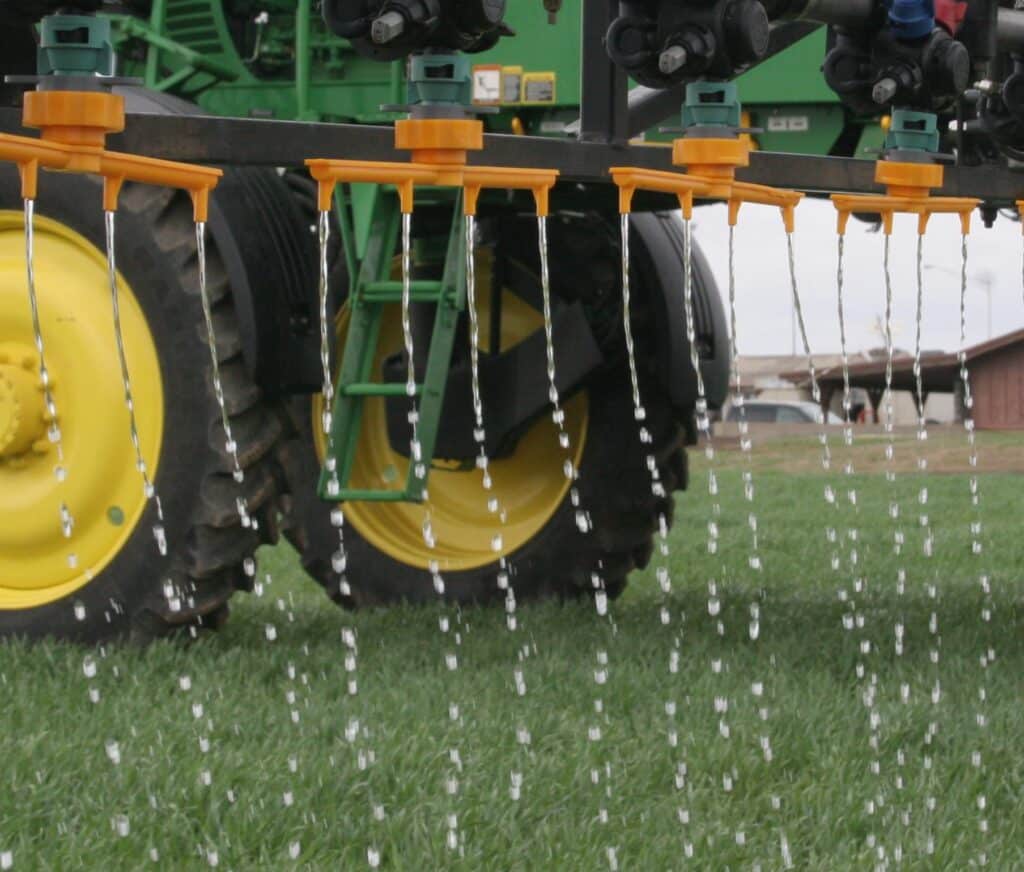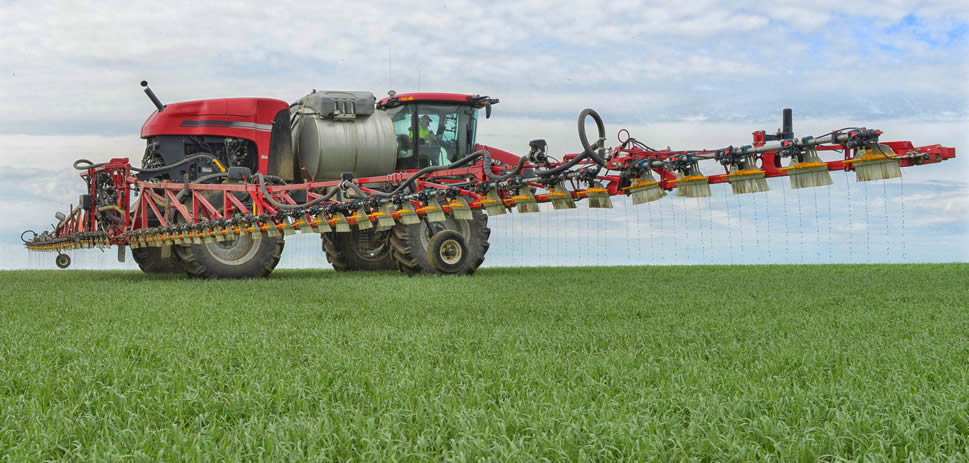
Background
Since its introduction in the late 1980’s, Intensive wheat management has contributed to a doubling of the Kentucky average state yield (reference USDA state wheat statistics) while states such as Kansas remain almost stagnant. When asked, many Kentucky producers suggest that there are at least 4 factors which contributed to the majority of the yield increases, these include the following:
- Stand Uniformity: Many producers trip over at the starting gate by not establishing a uniform enough stand to generate maximum yields. The concept of placing quality seeds in the soil to the same depth, across the width of the seeding equipment and across the field sounds easy but it’s a big challenge for many producers. While most seeding equipment has improved over recent years (partly through the consulting work of Needham Ag) there are still improvements to be made, especially when it comes to no-till seeding equipment.
- Weed, Insect and Disease Management. Prior to the adoption of intensive wheat management, many producers applied their nitrogen one time in the spring. If weeds were a problem, many producers used to mix liquid nitrogen with the herbicide to save a pass across the field, a practice which was unheard of in many European countries on account of crop damage, antagonism and yield losses. Few fungicides or insecticides were utilized to manage diseases or insects. Now producers are doing a better job positioning varieties, then scouting their fields to determine which products are required on a field by field, variety by variety basis. The crop uniformity improvements discussed in section 1 (above) also helped the performance of the fungicides by allowing them to be applied at the correct growth stages.
- Nitrogen Rates and Timings: There is a now a significantly higher level of understanding when it comes to nitrogen rates and timings. For example, many years of replicated research and field trials have helped growers understand how much N should be applied to each field (or regions within each field) and at which growth stage. These recommendations are based on crop health, tiller density, soil tests and yield potential.
- Uniform and Accurate Applications of Nitrogen. Most producers switched to liquid nitrogen many years ago because the standards of uniformity and application rate accuracy couldn’t be matched with the spinning disc fertilizer spreaders they used to use. This has been further improved with the use of tramlines, swath control and auto-steer systems on sprayers which almost eliminate the doubled up areas on the ends of the field which often used to lodge. Many producers also found that liquid nitrogen provided higher yields compared to dry fertilizers such as urea. Research from Ontario reinforces these observations: Nitrogen Sources For Wheat.
The Problem
Some producers still apply liquid nitrogen to wheat in the spring with flat fan or flood-jet nozzles. Even when the wheat is small in the early spring, significant levels of leaf injury can occur. Leaf scorch causes infection sites for foliar diseases and reduces early spring plant health which is critical to the grain site formation process. Yield reductions of sprayed liquid nitrogen applications vary by conditions and nitrogen rates, but 5-10 bu/ac yield losses have been frequently documented. Additional plant injury and yield losses occur when liquid nitrogen and herbicides (especially SU herbicides) are tank mixed and sprayed on cereals in the spring. This practice should be avoided, in fact many producers should consider applying their herbicides in the fall to remove weed pressures before they begin competing with the crop in the spring.
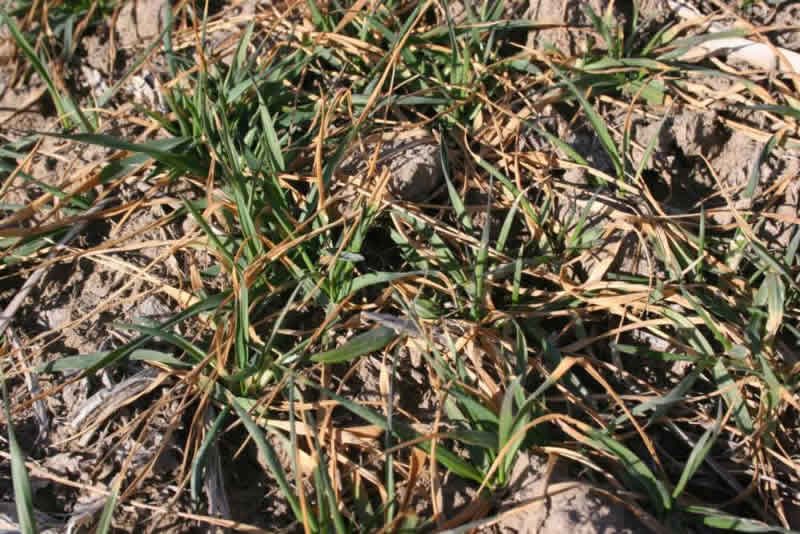
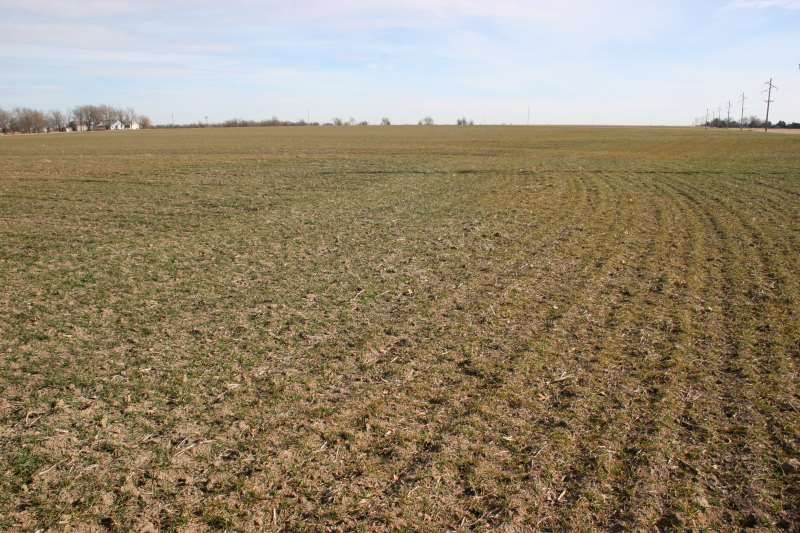
Liquid nitrogen was sprayed on this field of wheat early in the spring with flat-fan nozzles. Plant health was significantly compromised at a time when yields are being determined.
While three-hole nozzles are an improvement over flat fan spray tips, they do not apply nitrogen as evenly or accurately as a stream bar.
Three-hole caps produce a triangular-shaped distribution pattern that’s very height-sensitive. As the boom rises up, two streams come together to deliver a 2X N rate as illustrated in the image to the right. As the boom is lowered (either intentionally or unintentionally on rolling ground), there may be areas that don’t receive any N, as illustrated in the middle image. With N prices at record levels, you need to apply the nutrient evenly so each plant receives a consistent quantity, 3 hole caps don’t allow this to happen.
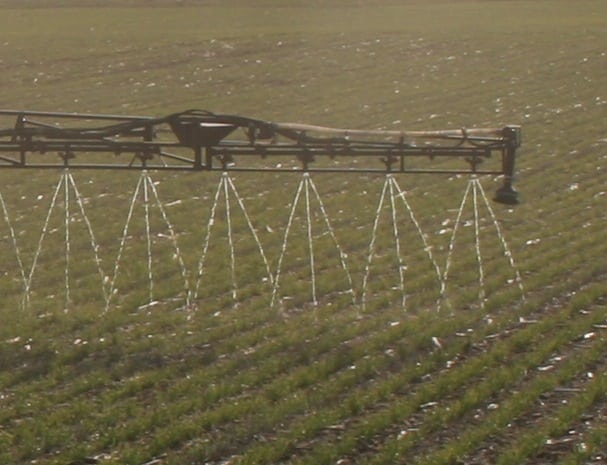
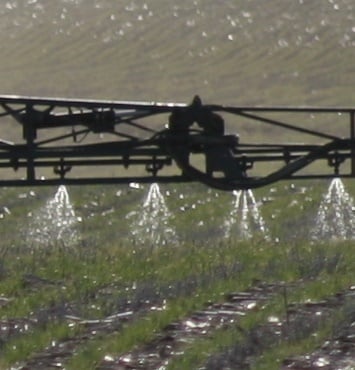
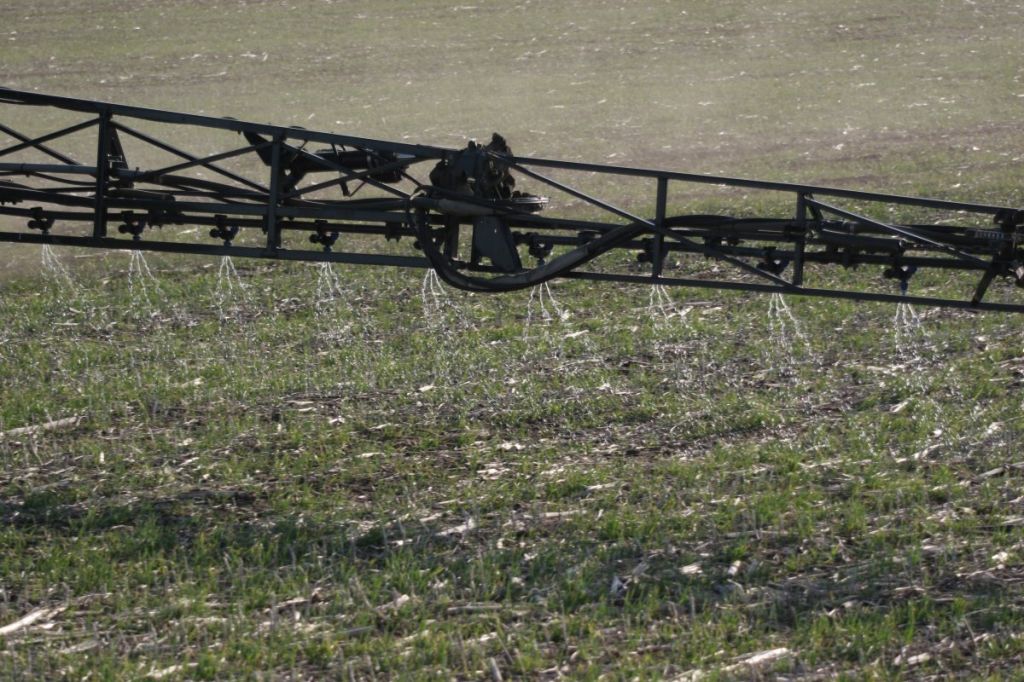
Three-hole nozzles are also influenced by forward speed and/or wind speed. As producers buy larger and more powerful sprayers, they want to run faster. The pattern produced from the 3 hole caps narrows as effective forward speed increases, so constant changes in boom height are required to compensate for the changing distribution angles.
Burnt wheat
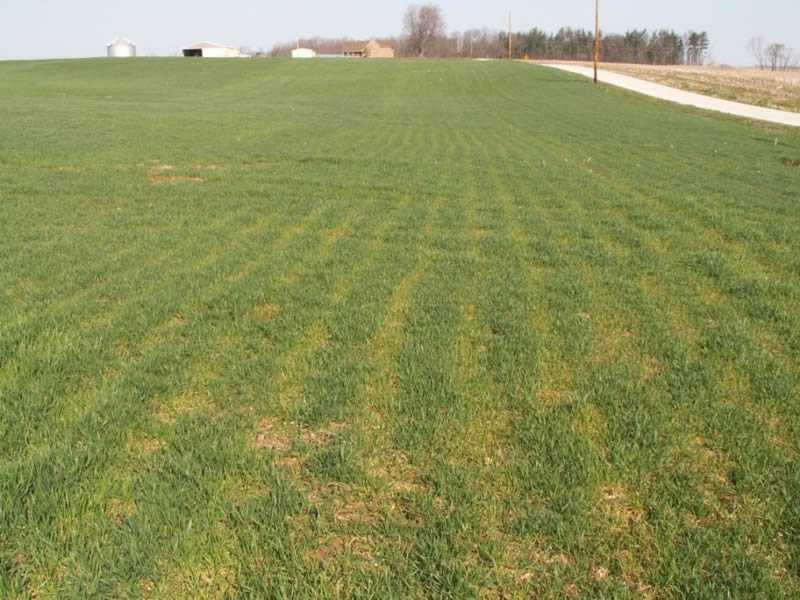
The photo above illustrates a wheat field that had liquid nitrogen applied using three-hole fertilizer caps.
The photo below also illustrates a field that had a single application of N delivered with the three-hole nozzles just prior to green-up. The N was the only application that was made at a 90-degree angle to the drill rows, so the streaks could be easily traced back to the three-hole nozzles on the 120′ boom.
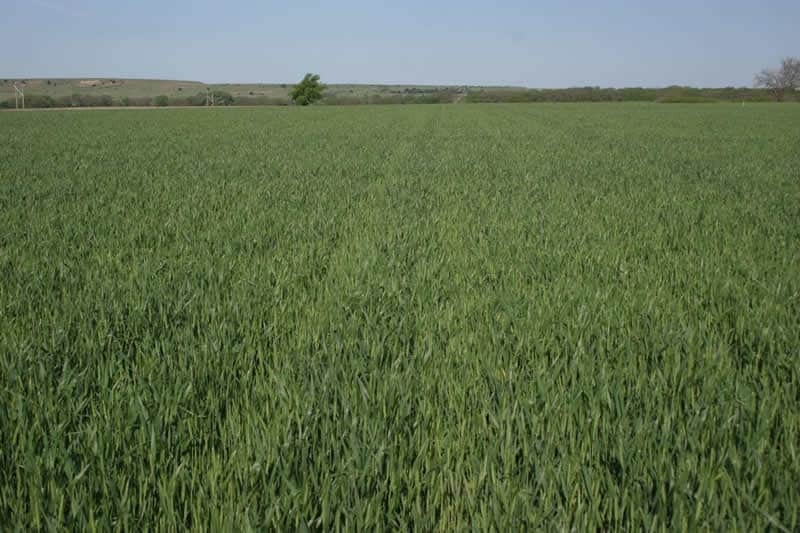
The photo below shows two of the main stem wheat heads that came from the previously discussed photo. The one on the left came from one of the yellow N deficient streaks and the larger head on the right came from one of the green streaks. Look at the difference in head size and flag leaf health. Based upon spikelet counts, we suggested that yields were halved in the streaks where little to no N was applied.
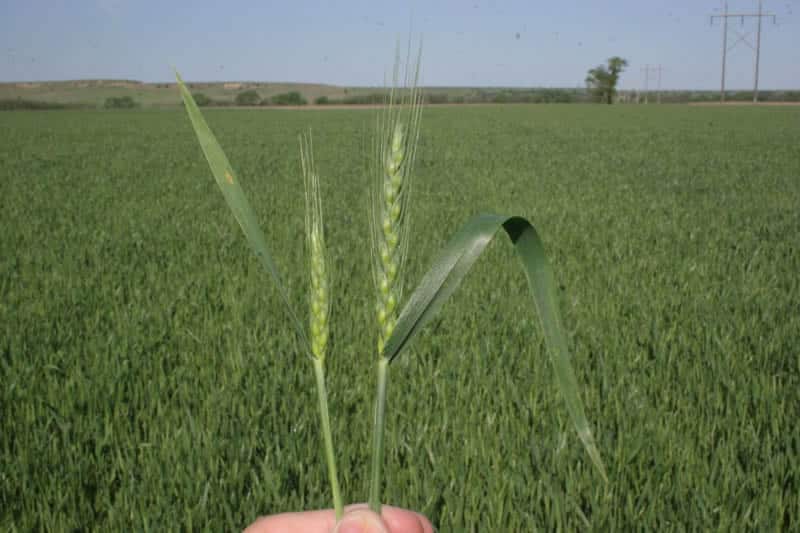
There are lots of opportunities to increase wheat yields, don’t let poor N distribution be one of the weak links.
When applying liquid nitrogen with multi-hole nozzles, most producers have found they are extremely susceptible to wind. Wind can be caused directly from fast forward speeds, or the combination of driving into headwinds.
Applying nitrogen within either (or both) of these conditions frequently results in the streams not spreading out sideways, causing a concentrated band of nitrogen to be applied under each nozzle cap, as illustrated in the photo below.
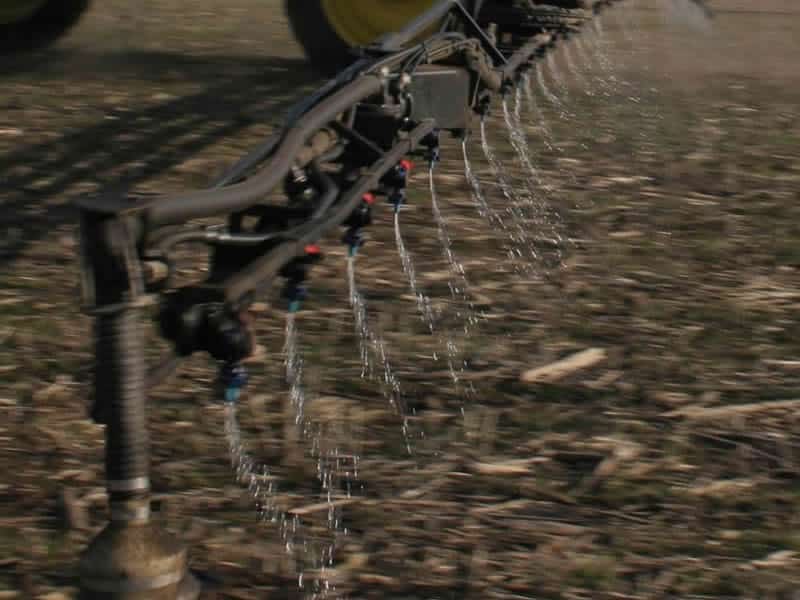
The photo below illustrates another producer who used 3 hole nozzles to apply the second application of spring N around the jointing stage. In this example, the pass was made at an angle to the planted rows.
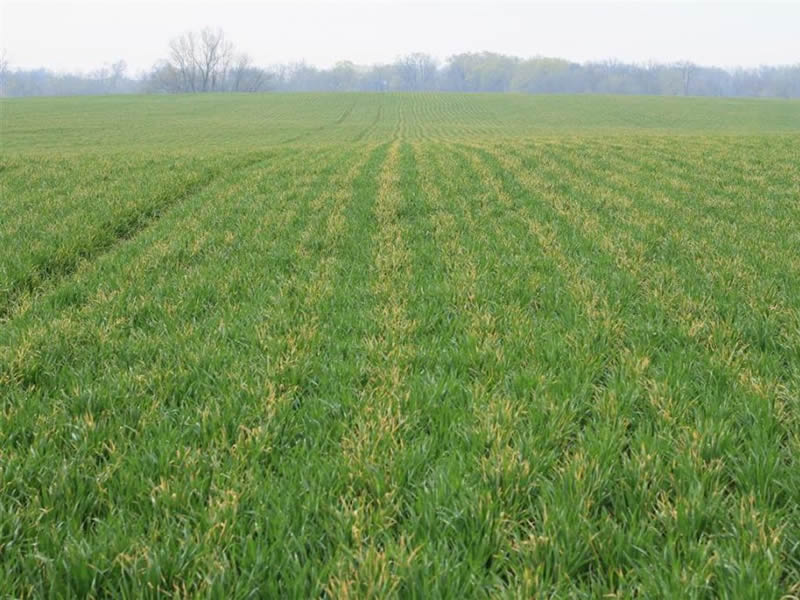
Close inspection revealed significantly increased scorch where the streams narrowed as a result of the combination of wind and forward speed. The final result appeared to be most of the liquid N was delivered to about 1/3 of the surface of the crop.
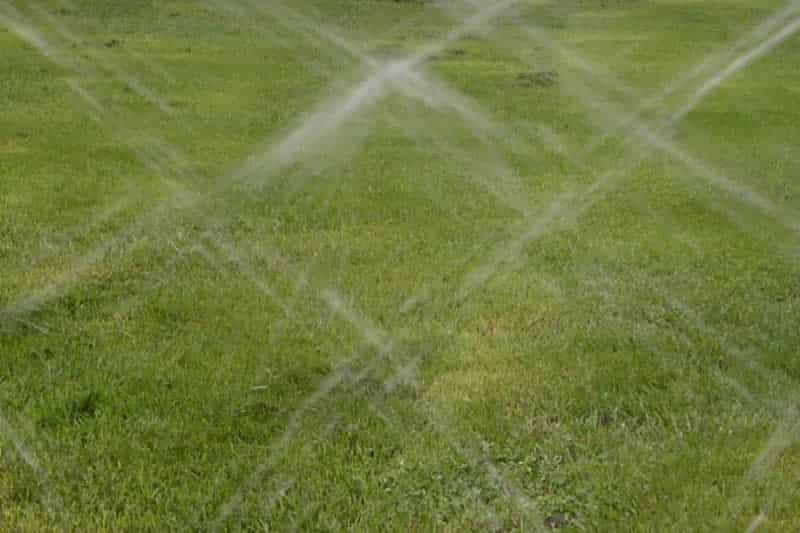
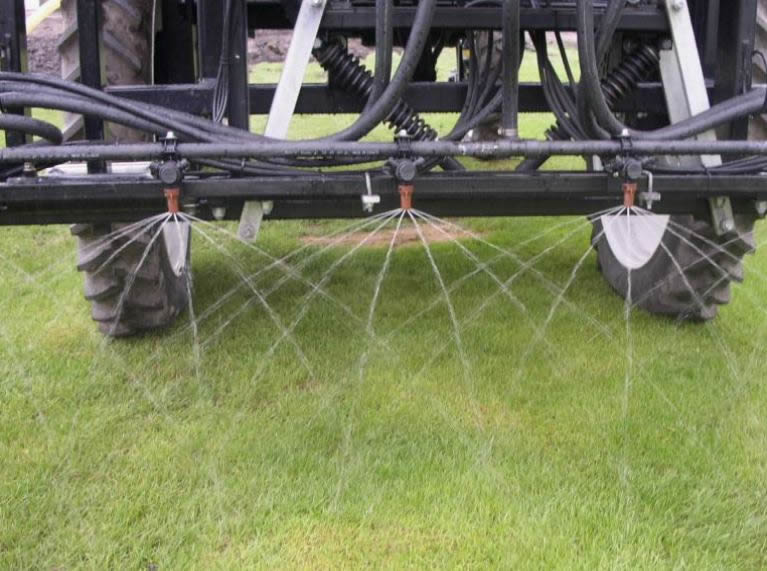
Multi-hole caps produce smaller droplets than a stream bar, this results in more leaf retention on the wheat and additional leaf tissue injury. Research shows that leaf injury translates into yield loss. As illustrated in the photo to the right, streams of nitrogen also collide when using the multi-hole caps, which further adds to the leaf injury problems. Multi-hole caps are height dependant. When operating on rolling ground, it’s difficult to hold the boom at a consistent height above the crop. Height variations can result in 2-3 streams hitting the ground in the same area, which also results in 10-15″ areas of the ground which receive no nitrogen at all. As expensive as nitrogen is, it must be applied accurately and uniformly. A set of multi-hole caps don’t achieve this goal.
The Solution
Most producers or dealers own mounted, trailed or self-propelled sprayers. Most of these sprayers can be equipped with stream bars to allow accurate and uniform liquid fertilizer application. We sell stream bars for many different brands and configurations of sprayers around the world and some are illustrated below. If you have questions regarding specific configurations, please contact us.
When you order stream bars, we will need to know the following information to help us determine the optimal configuration and maintain the ideal application rate and pressure range.
- Nozzle spacing: (15″ or 20″ for example)
- Spraying speed: (We need an approximate operating speed range, for example 10-12mph)
- Application Rate Range: (For example, 12-20 gallons per acre of 28% nitrogen)
- Sprayer Plumbing Brand: (For example, Spraying Systems, Hardi, etc)
Benefits Of Stream Bars
- Accuracy Stream bars are designed to evenly apply liquid fertilizers such as 28%, 30% or 32% nitrogen to wheat and other crops. Each of the four outlets on the stream bars are ported to ensure consistent delivery of fertilizer over the range of operating pressures.
- Excellent for no-till Stream bars deliver concentrated streams at equal distances, minimizing the amount of N tied up on residue, compared to the 3 hole nozzles (and especially flat fan nozzles) which increase the coverage on surface residue (in addition to the wheat leaves). 3 hole nozzles (and flat fan nozzles) also increase the amount of N which is tied up on surface residue and also potentially increase the N losses via volatilization.
- Unaffected by boom height Stream bars produce vertical streams of fertilizer with no overlap, so product application is unaffected by boom height.
- Minimal leaf scorch Stream bars deliver streams of fertilizer, so contact with the crop is minimized. High rates of nitrogen can be applied in one pass with minimal leaf injury, even on windy days.
- Available for 15″ and 20″ spacing Stream bars are available to fit most sprayers around the world and are available in 15″ and 20″ spacing.
- Adaptable for different product rates By using orifices, the operating sprayer pressure can be maintained within the 25 to 50psi range.
